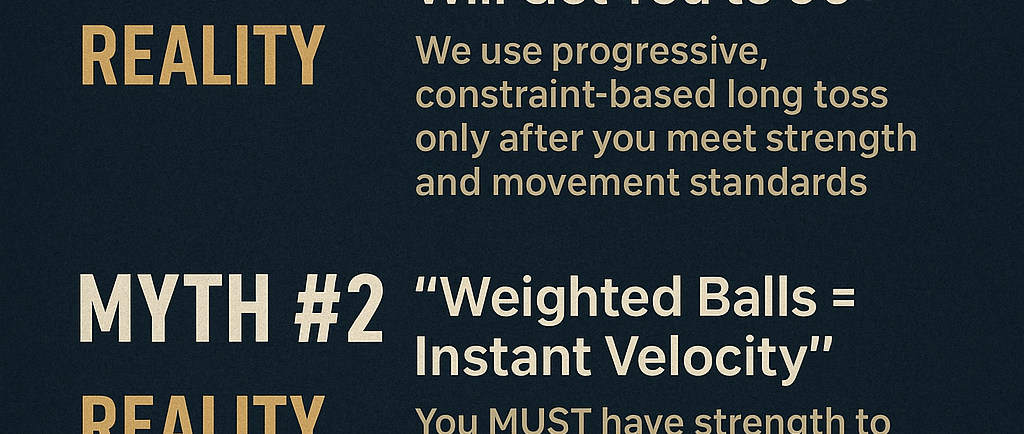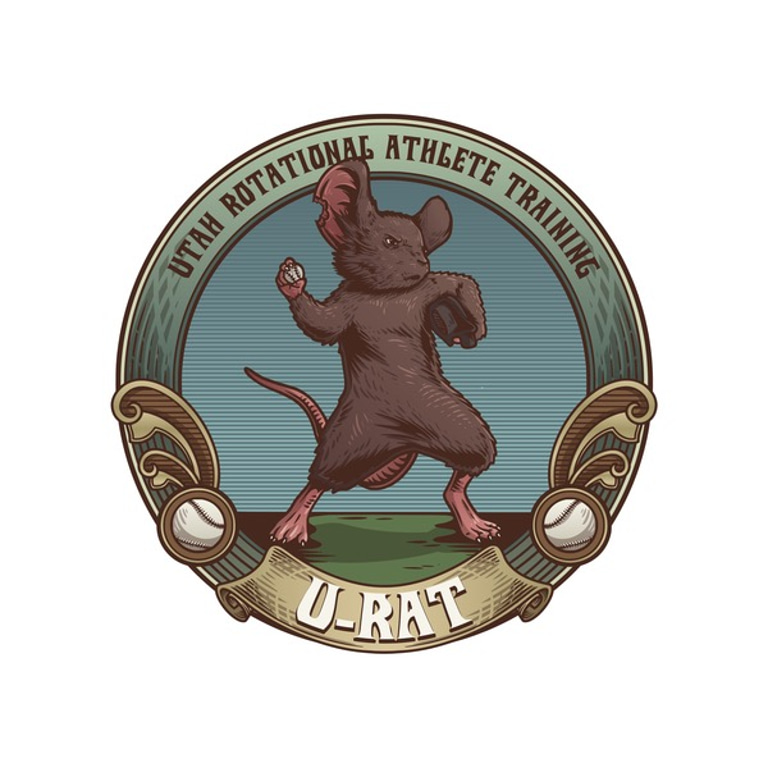Velocity Myths Busted: What REALLY Adds MPH to Your Fastball (And What’s Holding You Back)
How do we add velocity to our athletes safely and for the long term?


Every year I get the same questions from parents and athletes regardless of the level they play at, they want to throw harder. And for good reason, every athlete should look to improve from where they currently are at.
The answer is never “just long toss more” or “buy this $400 weighted-ball set.”
After coaching thousands of athletes across the country and world it has helped me develop a system that gets results more than failure. Through our system and watching radar guns climb 5-12 mph in a single off-season, I can tell you exactly what works — and what’s complete myth.
Let’s bust the three biggest velocity lies and then give you the real blueprint we use every day at URATBB.
Myth #1: “Long Toss Alone Will Get You to 90+”
Long toss was, and still is a large part of throwing programs. But it is not the reason you would have lasting velocity. Long toss builds range of motion in the arm and can contribute to arm speed, but it does not build arm strength.
Reality: We use progressive, constraint-based long toss only after you meet strength and movement standards that we follow. We LOVE long toss, but we don't just throw it in to every program. I often get a lot of players asking when they will start long tossing more and "stretching-out". The answer is once you meet the standards we are ready to progress into long toss and more aggressive approaches.
Myth #2: “Weighted Balls = Instant Velocity”
Everyone turns to the weighted ball progressions for the "easy button" approach to building velocity. Many of the programs around will utilize weighted balls and will get short term results but often times don't have a lasting impact.
Reality: Too often during my time previously and currently in college baseball as a recruiter as well as during my time in professional baseball, we would bring in athletes that had giant off season spikes with weighted ball programs only to have them continually lose the short term adaptations caused by rapid increases in range of motion. You MUST have strength to support the new range of motion to have any lasting impacts.
Myth #3: “Just Throw More”
If throwing more was the answer than a lot more players would be progressing. I have noticed when an athlete is serious it's not a lack of effort but rather a lack of guidance. They put too much effort and time into the wrong things. I was guilty of this when I was a player, and until I learned how to monitor my throwing program and wave load my day to day work, take no throw periods, and high effort periods I never made progress. Without monitoring myself and many others were continually regressing.
Reality: I was guilty of this when I was a player, and until I learned how to monitor my throwing program and wave load my day to day work, take no throw periods, and high effort periods I never made progress. Without monitoring myself and many others were continually regressing. Depending on the time of the year and progression phase you are in will dictate the amount of high effort days and recovery throwing days you should have. This can vary between 0-4.
The URATBB Velocity Blueprint – How We Actually Add 5-12 MPH Safely
Every single athlete starts with our movement assessment, ArmCare strength testing, biomechanics evaluation and when ready pitch shape and velocity evaluations using Pitch Logic and other tools.
1. Point Testing Sheet Baseline
We measure 20+ markers (Broad Jump, Half-Kneeling Rotation, Plank Time, IR/ER ROM, Pull-Ups, 10-Yard Sprint, etc.). These numbers tell us exactly where your velocity is leaking.
2. Custom Drill Packages & Throwing Progressions
You get your own private portal with daily stability, mobility, shoulder and core strength, and throwing drills / progressions/.
3. ArmCare.com Daily Monitoring (The Smart Governor)
3-minute daily tests let us raise or lower intensity on the fly. Green = gas pedal. Yellow/red = extra shoulder work and reduced volume. This is why our injury rate is near zero while gains keep coming.
4. Torq Rotational Speed & Power System
Using tools that can easily be used anywhere, the Torq System through ArmCare helps to build rotational speed and power in our athletes.
5. Progressive Shoulder Superhab
Cuff, scap, and lat strength built from your exact Point Testing numbers so your arm can handle the new power we’re creating.
6. Weighted Balls / Longtoss – Only When You’ve Earned Them
You don’t touch a single overload/underload ball until:
• ArmCare Data Met
• Consistent Biomechanics
• Aerobic / Anaerobic Base is Set
Once you hit those, short high-intent blocks produce the biggest jumps we see.
Real 2024-25 Off-Season Example
A normal program is 16-20 weeks of focused work, no easy button. Just continued work and progress to learn the skills and fundamentals needed. Many groups will offer a quick fix and easy adjustment. But the reality is you can only set a foundation once. If you do a poor job setting the foundation don't expect that house to withstand the hurricanes and storms that the baseball season and your career will throw at you. Thats why we take our time building a foundation that will last.
If you are ready to take the next steps reach out today.
uratbb.com
jordan@utahrotationalathletetraining.com
URATBB | Utah Rotational Athlete Training Baseball
#LeaveNoMPHBehind #URATBB #VelocitySeason
